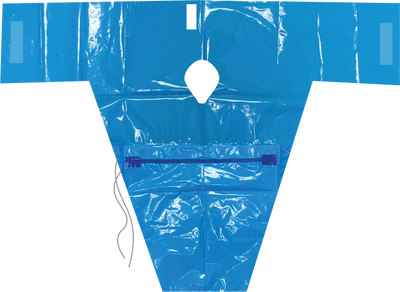You have no items in your shopping cart.
0item(s)
You have no items in your shopping cart.
You have no items in your shopping cart.
You have no items in your shopping cart.
NEW! Drapesafe™ is a compact, waterproof draping mechanism with an in-built fluid containment pouch, ideal for both urological and small surgical applications.
Developed to help alleviate the infection control, workplace safety and environmental concerns of spill-prone procedures, Drapesafe provides the best of both worlds: site protection and fluid containment in one.
For fluid-intensive procedures such as cystoscopies and IDC¹ manipulations, oversized drapes and makeshift fluid containment methods are common yet concerning. Not only can traditional approaches result in unnecessary waste, they can lead to occupational safety hazards through the ineffective containment of leaking fluids. In one clinical study, 84% of hospital staff acknowledged frequent soiling of linen or clothing with bodily fluids during IDC manipulations – many incidents of which went unreported.²
Designed by an Australian urologist, Drapesafe can help mitigate these concerns; reducing the risk of site contamination, spills and slip hazards by providing an ideally sized and cleverly constructed means of protection.
A blend of ingenuity and common sense, Drapesafe is an ideal resource to have on hand for spill-prone procedures in urology and cystoscope suites, wards and beyond.
Features:
Specifications:
Available in Non-Sterile and Sterile variants.
Please contact your Product Specialist or Haines directly to enquire about purchasing the Sterile Drapesafe.
1. Indwelling urinary catheter
2. Weerakoon et al, 2009. Draping and associated equipment for indwelling catheter manipulation by hospital staff: an assessment of attitudes and adequacy. BJU International, 103(9), pp.1206-1209.
3. Test results on file.
| Product | Price | Quantity | Options | |||||
|---|---|---|---|---|---|---|---|---|
| Features |
| Availability: |
| Price |
| Options |
| Actions |





